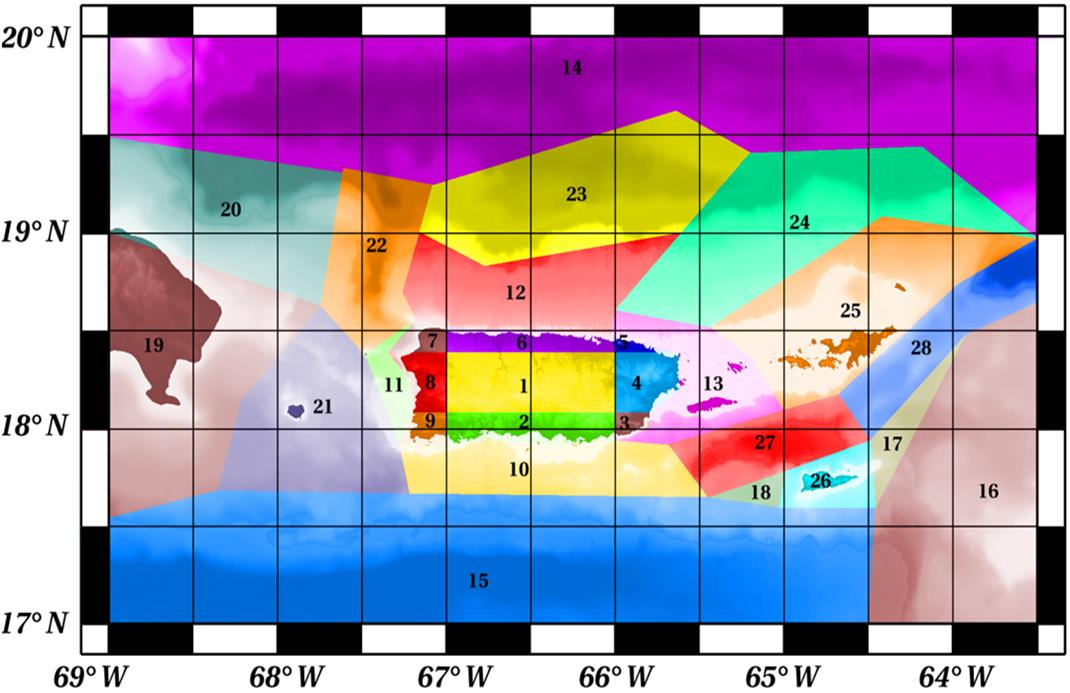No Warning, Advisory or Watch is in effect for Puerto Rico and the Virgin Islands.

No Warning, Advisory or Watch is in effect for Puerto Rico and the Virgin Islands.

Most earthquakes in the world occur along the contacts between the large rigid plates that cover the earth; the rigid plates are called lithosphere. The lithosphere is made of the Earth's crust and the uppermost mantle which behaves like a rigid block. These plates are ~50-100 km thick for oceanic crust and ~150 km thick beneath continents albeit some studies have found continental lithosphere to be up to ~250km thick in places. These rigid plates "float" on the Earth's convecting mantle; the movement in the mantle "pushes" the plates around the Earth. In general continental plates are less dense (lighter) than oceanic plates. Because of this, oceanic plates are recycled into the Earth's mantle via a process called subduction while the cores of continental plates remain on Earth's surface (like pond scum). This is why the oldest oceanic plates are only about 200 million years old; the oldest oceanic plate is in the Mediterranean Sea where the Tethys ocean used to be is about 270-340 million years old. However, the continental plates have material that are billions of years old. Some of the oldest continental rocks on Earth can be found in North America and they are ~4 billion years old. This is very old considering the Earth was formed about 4.55 billion years ago!
There are different types of interaction between plates:
Puerto Rico is located on the border between the North American and Caribbean plates. The two plates are colliding at an angle; this results in something called oblique subduction. This means that there is a mix of subduction like that off of South and Central America and lateral motion like the San Andreas fault across the region. To better classify seismic activity networks in complex regions like Puerto Rico scientist sometimes use geography and geology to identify local seismic zones. This permits better communication to the local public about where an earthquake occurs. Below is a figure showing the current map of the local zones used by the Puerto Rico Seismic Network to communicate with the public.
